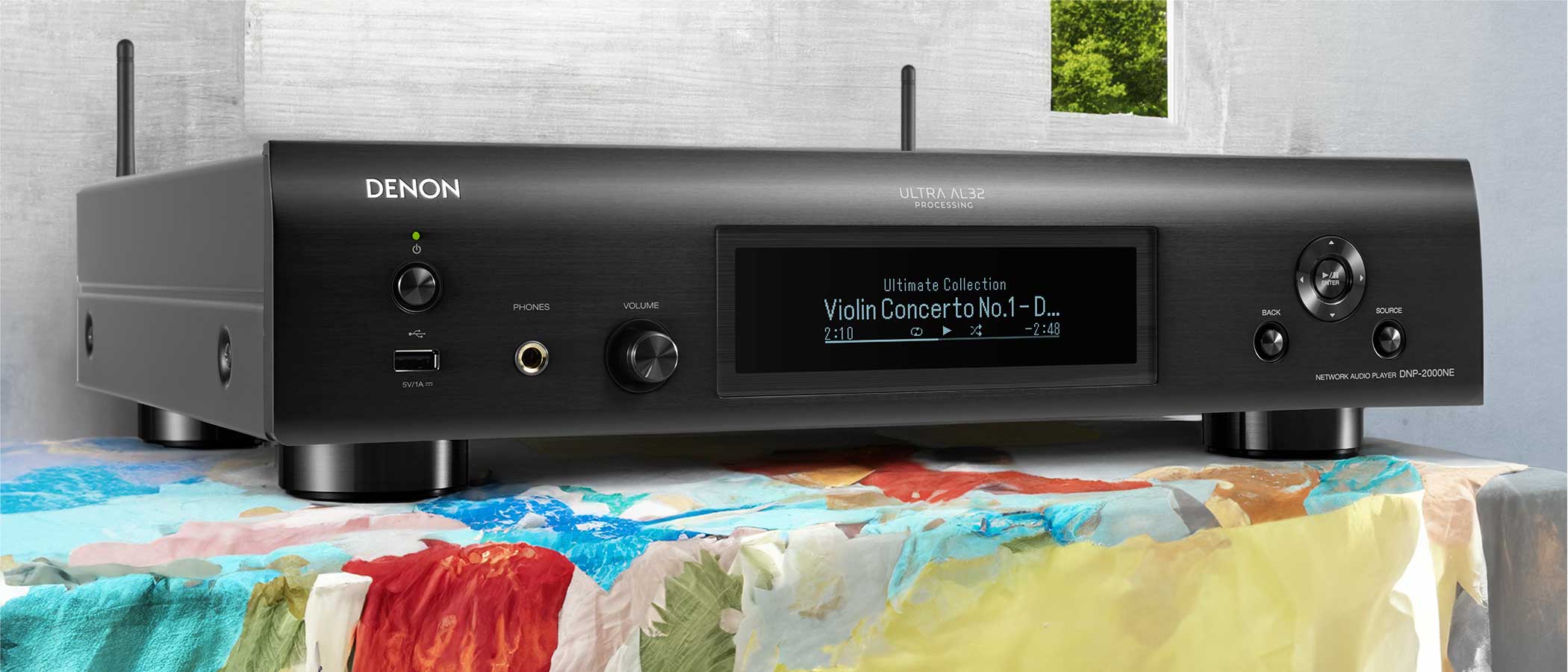Sound+Image Verdict
The DNP-2000NE performs streaming and network playback thrillingly, while bringing the considerable benefit of digital inputs and variable outputs under volume control. Plus it’s all so easy with the HEOS app in hand. Top marks.
Pros
- +
High-level processing; excellent sound
- +
Fixed and variable outputs
- +
HEOS streaming & multiroom
Cons
- -
Bluetooth SBC only
- -
No rear USB-A socket
Why you can trust What Hi-Fi?
Denon has a definition problem here. Not musical definition: heaven forbid, this unit operates at high-resolution and should offer all the definition you need in those terms.
No, it’s what exactly to call the DNP-2000NE – how to define its functions. Officially it’s a “high-resolution streamer with HEOS Built-in”. And so it is. But it’s also rather more.
For one thing this streamer has a set of digital inputs, for which it behaves not as a streamer but as a digital-to-analogue converter. And indeed these abilities go beyond many standalone DACs in having an HDMI connection which can play audio from your TV, and a USB-B socket for playing direct from a computer or laptop, in addition to optical and coaxial connectors.
For another, it’s got a volume control. That makes it a preamplifier, and if you don’t use any analogue sources you could do without a conventional amplifier in your system, and go straight from this Denon into power amps or active speakers.
So it’s more than a streamer – to give the DNP-2000NE its full due we might call it a streaming digital preamplifier. Definition sorted, then, let’s see exactly what it can do for you.
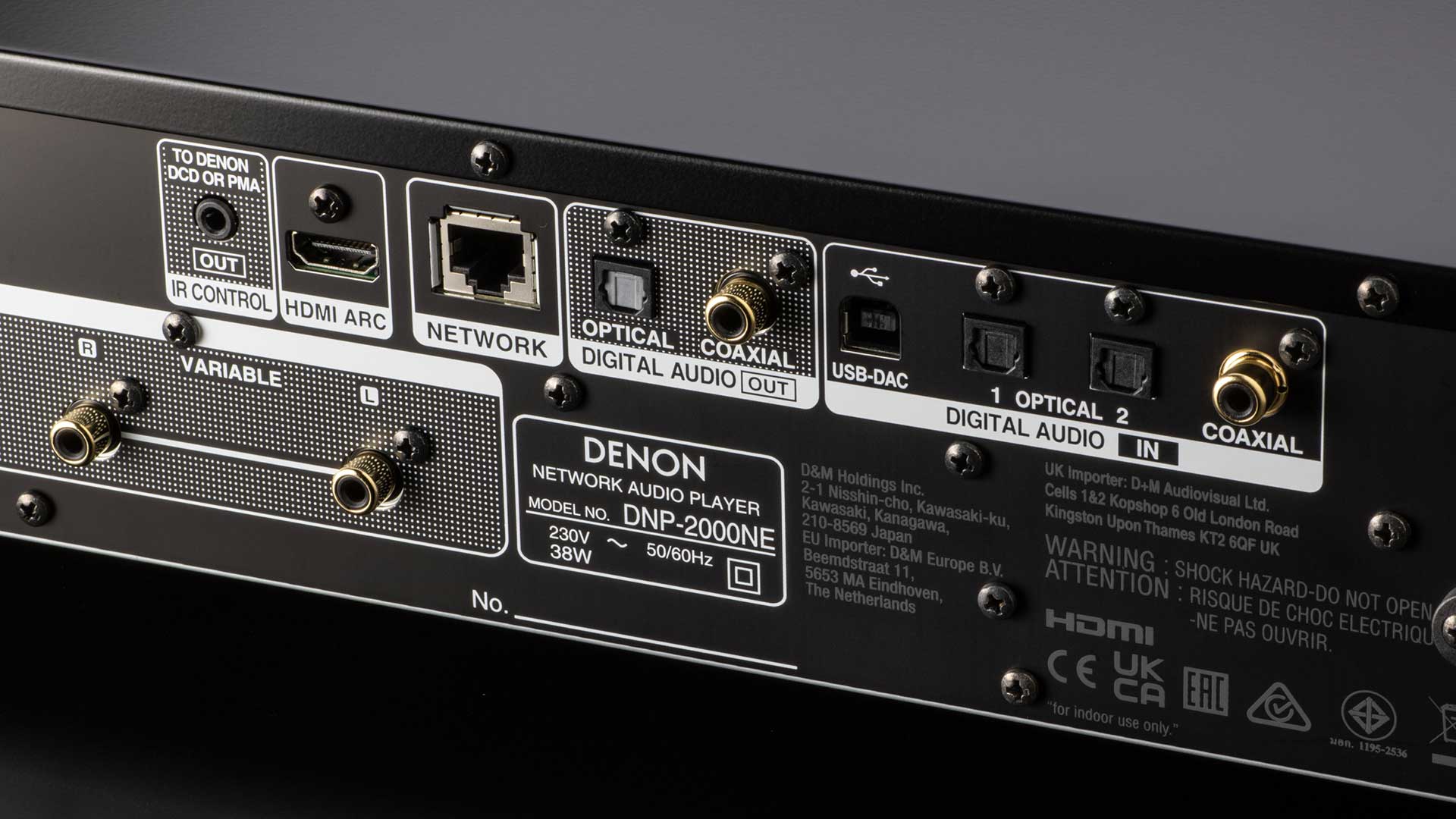
Build & facilities

This review originally appeared in Sound+Image magazine, Australian sister publication to What Hi-Fi?. Click here for more information on Sound+Image, including digital editions and details on how you can subscribe.
Streamers come in all shapes and sizes, including teeny-tiny boxes, as you can see elsewhere this issue. But Denon’s DNP-2000NE, although low in height,
is full component width, so it will match other hi-fi separates and slot neatly into a hi-fi rack or stack.
Where some streamers have entirely blank frontages, this unit’s solid aluminium front fascia has a lot going on. On the right is a selection ring for getting through menus, while on the left there’s a useful full-size headphone socket, and a handy USB-A slot below the power button into which you can plug a stick or drive of files for playback. (There isn’t a USB-A slot on the back, sadly, so if you plug in a permanent drive, it’s gonna look messy.)
The latest hi-fi, home cinema and tech news, reviews, buying advice and deals, direct to your inbox.
Then there’s that potentially game-changing volume control, which is perhaps rather a small knob, but you’re more likely to be using the up/down keys on the
surprisingly comprehensive full-sized remote control, which can also control
a compatible Denon amplifier.
Of course, if you do plug this into a normal amplifier, you won’t want a volume control – you’ll be needing a fixed output. So round the back of the DNP-2000NE are not one but two sets of analogue outputs: choose fixed, or variable, as you like. And we like this option very much.
You can also take the output digitally, via optical or coaxial outputs, into a superior DAC should you have such a thing, though we assume these outputs will be limited to the usual 24-bit/192kHz. The analogue outputs are specified to at least 50kHz (-3dB), if we’re reading the specs correctly, so from the analogue outputs the rest of your equipment chain can receive a genuinely high-resolution signal.
Then there are those inputs – two optical digital, one coaxial digital, a USB-B socket for connecting a computer, and that handy HDMI socket with ARC playback from an ARC-equipped TV.
There’s an Ethernet socket for wired networking, or antennas to screw in for a Wi-Fi connection, and for Bluetooth direct streaming. Bluetooth seems limited to the base-level SBC codec, however, so other streaming methods will produce better results. There’s AirPlay 2, though Apple’s own current implementation limits device streaming to 256k AAC. The unit is Roon tested, should you enjoy that paid software.
But really, all streaming leads back to the HEOS platform, which is the obvious way to stream most things, and in most cases will deliver the best quality.

HEOS & control
HEOS is the streaming and multiroom platform developed originally for Denon and Marantz, though pleasingly it has roots in Australian technology (the Avega system for wireless speakers). Early HEOS development took place in North Sydney.
It was one of the original platforms of this kind, so by now is one of the best developed and safest hands. And thanks to their multiroom ability, HEOS-equipped things can talk with each other, so if you had one of those Marantzes elsewhere in the home, you could play the Denon’s inputs to them, or their inputs to the Denon, or just play a streaming service through all the units at once, for whole-home music under app control.
The HEOS interface is wonderfully simple, connection usually reliable, and it brings all kinds of streaming access: direct (via Wi-Fi, so high quality) from music stored on a phone or tablet, from any shares of files on your network, and then from music services paid and free, and internet radio. Spotify, Tidal, Amazon Music and Deezer are here (at this level Qobuz might be considered an omission), with TuneIn radio, iHeartradio and Soundcloud all getting panes on the main selection menu. You can build and store playlists, check your playback history, and more besides.
For ease of control, then, and for access to online sources, the DNP-2000NE is something of a motherlode.
We can’t resist looking back here, because it was not always so. In 2013, the year before HEOS launched, we reviewed the DNP-720AE, a predecessor of this unit. The ‘Denon Remote App’ which controlled it back then was so flawed (as was sister company Marantz’s then ‘Wizz’ app) that we deemed various aspects of the product unusable until a new app was released six months later, bringing such absolute basics as alphabetical jumplists and text search, without which DLNA and internet radio selections required endless glitchy scrolling. So all hail HEOS, and the difference a decade makes.
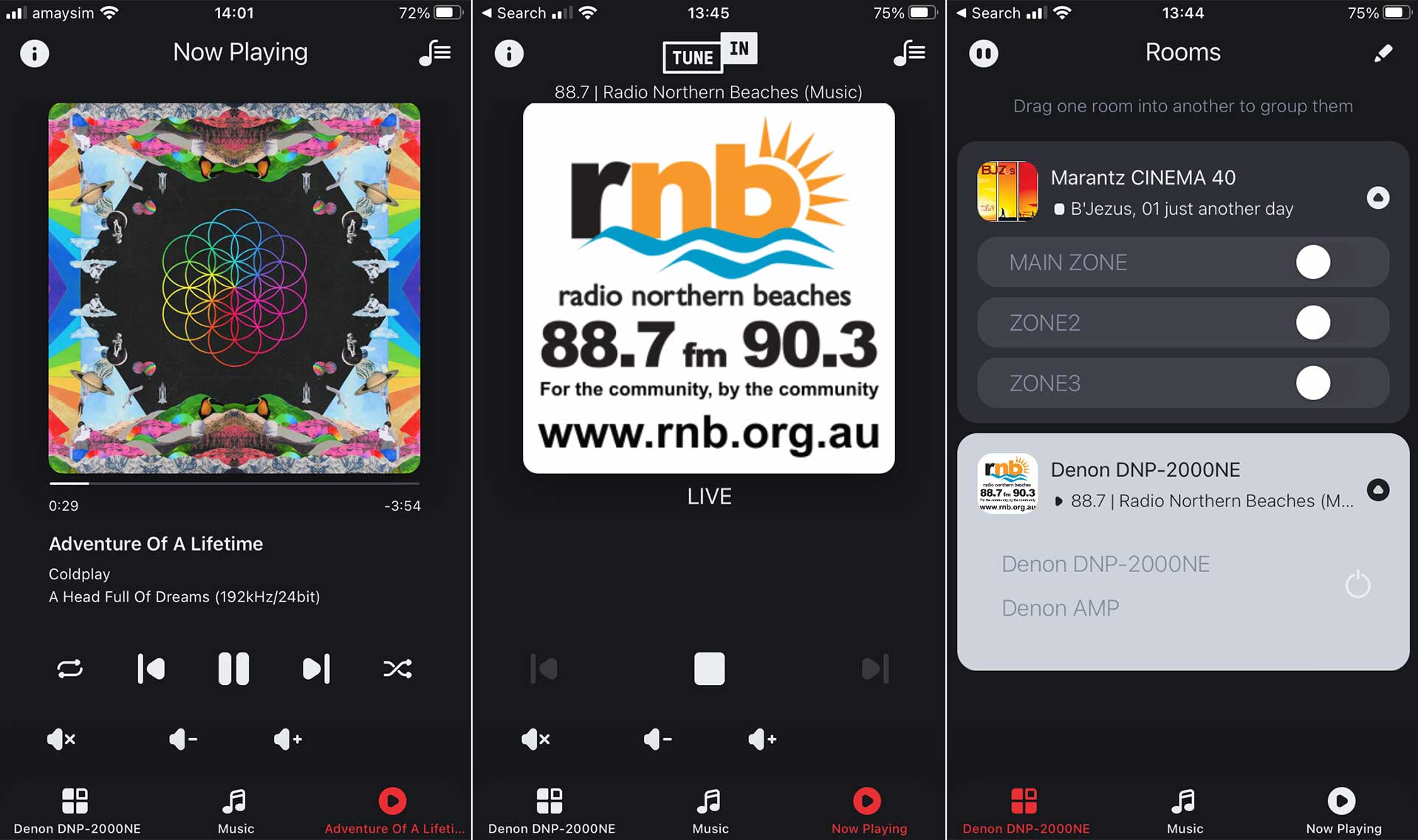
Ultra AL32 processing
The DAC chips used in the DNP-2000NE are 32-bit/384kHz-capable ESS Sabre ES9018K2M chips, well-regarded, offering two DACs per chip (compared to the ES9018’s eight), and used here in a four-chip implementation. But it’s what’s around the chips that makes the difference, and the processing method within the DNP-2000NE is given headline position on the front panel above the main display, where Denon has enscribed ‘Ultra AL32 processing’.
This contrasts with Denon’s CD player range, one of which is pictured on the DNP-2000NE web page where this streamer is shown shelved above a matching DCD-1700NE. That product’s fascia says “Advanced AL32 processing Plus”.
In fact Denon’s CD players have since moved on – there’s now a choice between two others: a $3499 “Reference CD/Super Audio CD Player” and a $1099 non-SACD CD player, both of which share that “Advanced AL32 processing Plus”.
But there’s also a $5490 DCD-A110 CD player released for Denon’s 110th anniversary in 2020, and that one has our streamer’s “new Ultra AL32 Processing”. Ultra AL32 even has its own space-age logo. So is this the latest and greatest, what is it anyway, and what’s the diff?
There’s quite the history here, too. Denon’s Alpha processing goes all the way back to 1990, when its original introduction marked the “world’s first technical formula” for using upsampling and adaptive filtering to present 16-bit data in 20-bit quality, with the key advantage of vastly raising the number of possible quantisation levels for each sample from 65,536 levels to over a million, allowing more accurate processing and fewer rounding errors.
AL24 Processing later increased this to 24 bits (more than 16 million quantisation levels), and of course the current AL32 is 32 bits – a stonking four billion levels. The ‘Plus’ suffix indicated a lift from 192kHz sampling rates up to 384kHz.
Now we have the ‘Ultra’ label, which doubles the processing bandwidth again, upsampling even 32-bit/384kHz content to 1.512MHz. Denon does sometimes say foolish things about “carefully restoring data that was lost during digital recording” (not possible), but what it means is that the steps between the digital samples are being smoothed out ever more smoothly with interpolated sub-samples.
As with frame interpolation in TV motion-smoothing systems, this leaves us in the curious position of enjoying vastly more artificially-generated samples than we do originally recorded music. But while Tom Cruise has been jumping on sofas to warn us about what this does to video quality, it’s fully accepted in audio (predicting a one-dimensional value is rather simpler than interpolating 2D 4K video frames).
Meanwhile the higher bandwidth simplifies analogue post-filtering by allowing the reconstruction/anti-aliasing filter to be well above audible frequencies, so it can work effectively without cutting into frequencies below 20kHz and distorting phase in the audible band.
This is, in fact, the best argument for high-res audio in general. But the benefits above, say, 96kHz are questionable, so the push to go ever higher might be considered similarly so. Still, as with all things high-res, why not. So if Ultra AL32 is on offer, we might as well celebrate it. Let’s have a listen.
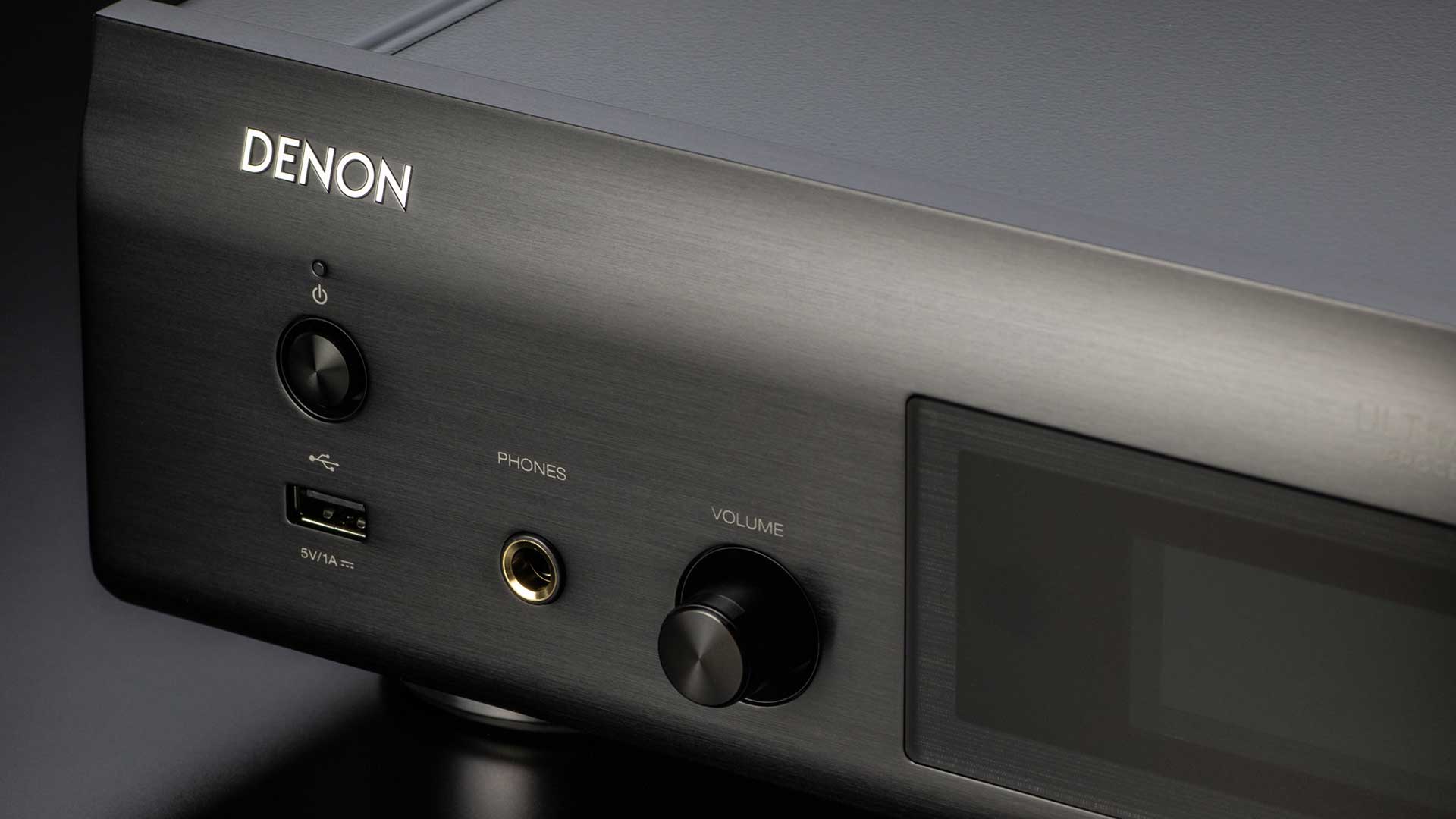
Listening sessions

Inputs: USB-A, USB-B, coaxial digital, 2 x optical digital, HDMI ARC, Ethernet, Wi-Fi, HEOS, Bluetooth (SBC only)
Outputs: fixed analogue RCA, variable analogue RCA, optical digital, coaxial digital, headphone, IR control (Denon)
Dimensions (whd): 434 x 107 x 374mm (plus 50mm height for antennas if used)
Weight: 9.7kg
It’s not only full component size, the DNP-2000NE is surprisingly heavy for a source; indeed at 9.7kg it’s heavier than a number of Denon’s integrated amplifiers. That’s generally a proxy for the quality of components within as well as the external chassis, giving us confidence as we cabled the output to our amp and plugged in our computer, a drive of music, an Ethernet cable, and the power. After a few remote control selections using the clear 3-line front display, the unit was updating and then ready to use. Time from unboxing to playback: about 10 minutes.
As the unit had opened up showing the internet radio menus, we got it playing our local community station while we spent some time exploring the device’s settings via the HEOS app.
One of these settings offered the software choice of fixed or variable output, which was odd given the two sets of outputs for exactly this purpose – but the setting didn’t seem to do anything to either pair.
Another setting for ‘Quality’ offered a choice of ‘Normal’ or ‘High’, so we went high, obviously, though this turned out to govern only the quality when sharing between HEOS devices – Normal for reliability, High for best bit-rate.
We went from internet radio to our attached drive of high-res files, the biggest quality jump possible! We were immediately and immensely impressed; the quality was superb. We’ve played Diana Krall and Michael Buble’s version of Alone Again (Naturally) 100 times before; we’ve never heard it so absolutely clear. For once Krall’s voice wasn’t large and dripping, it was just real, no effects, no sibilance, just there, and terribly sad (it’s a terribly sad song). Tears here, and heavens we were just getting started. It was going to be one of those sessions.
The Krall is a 2.8MHz DSD file – if you hit the info key on the remote this is usefully displayed on the front panel; it’s also shown on the Now Playing screen of HEOS. As we cheered ourselves up with some Coldplay, we noted the front display said 24-bit/48kHz while the HEOS app said 24-bit/192kHz – strange, but it sounded good enough. With Nelson Riddle’s Come Blow Your Horn (no really, it was a movie), the app gave no file information but the display correctly said 24-bit/192kHz.
Everything sounded thrilling; the DAC implementation and the analogue output stage here are exceptional, their resolving powers allowing insight into detail after detail, while the music flowed through unchecked. We tried to fox it with some tricky stuff, but it even managed to prevent Dion’s vocal on I Read It (in the Rolling Stone) from emerging thin and painful, as it does when played on a great deal of equipment.
How about a 128k MP3? Ah, well, the Denon was equally clear on revealing the limitations of that file, given a good system on the end of it, so we would say that this is not the machine for smoothing over shite (but then, what is?).
Spotify sounded rather better, with nicely native operation from the Spotify app, instructing the Denon rather than throwing tunes through the air. But again, Spotify’s sub-CD (still!) quality was easily audible, especially when compared against the same song played locally.
So the only thing we’d say about the DNP-2000NE is that it’s a streamer and
DAC of sufficient quality that it deserves decent file quality as an input. Garbage in, garbage out is always a valid philosophy (see p6-7), but it’s rarely so audibly self-evident as it was here.
We returned to our CD-quality and high-res collection and played via the USB-B from computer and through USB-A from the hard drive. The DNP-2000NE simply never put a foot wrong.
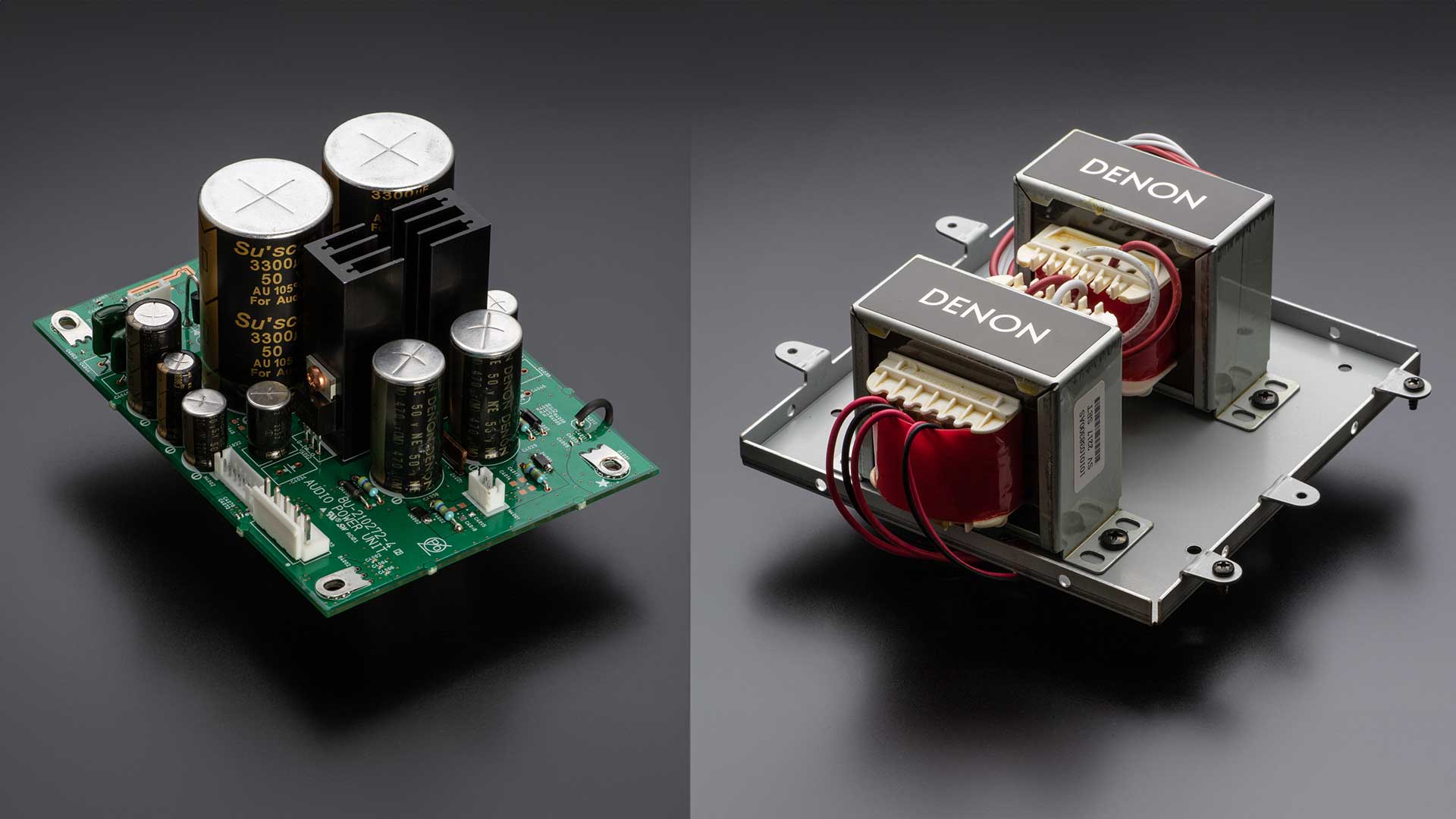
Verdict
You might think a streamer’s a streamer, and why go higher than entry-level? The DNP-2000NE puts that misguided notion to bed, pulls up the duvet and sets fire to the bedroom. It does streaming and network playback thrillingly, while bringing the considerable benefit of digital inputs and variable outputs under volume control. Plus it’s all so easy with the HEOS app in hand.
We always search hard for problems with review equipment. Other than a limited Bluetooth implementation and being too revealing for playing rubbish files, there just aren’t any here. Top marks.

Jez is the Editor of Sound+Image magazine, having inhabited that role since 2006, more or less a lustrum after departing his UK homeland to adopt an additional nationality under the more favourable climes and skies of Australia. Prior to his desertion he was Editor of the UK's Stuff magazine, and before that Editor of What Hi-Fi? magazine, and before that of the erstwhile Audiophile magazine and of Electronics Today International. He makes music as well as enjoying it, is alarmingly wedded to the notion that Led Zeppelin remains the highest point of rock'n'roll yet attained, though remains willing to assess modern pretenders. He lives in a modest shack on Sydney's Northern Beaches with his Canadian wife Deanna, a rescue greyhound called Jewels, and an assortment of changing wildlife under care. If you're seeking his articles by clicking this profile, you'll see far more of them by switching to the Australian version of WHF.
